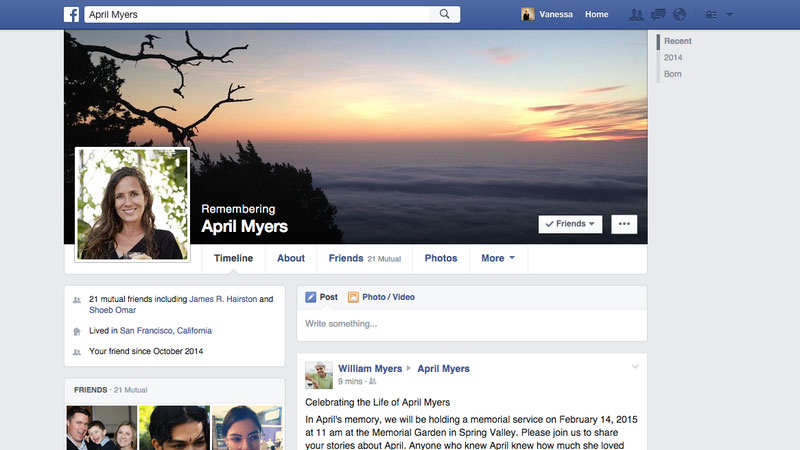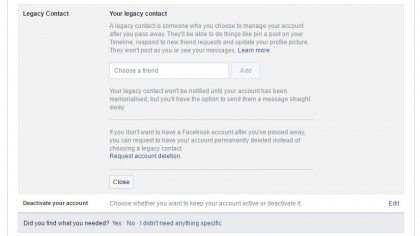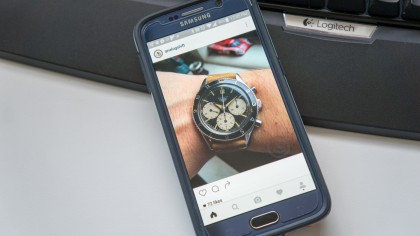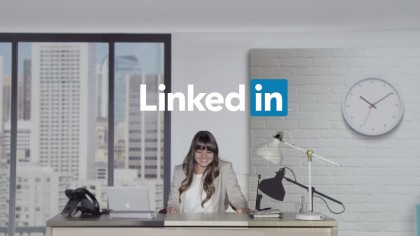This is what happens to your social network accounts after you die
How to deal with a hard topic on your Facebook feed

Facebook has 1.6 billion users. Inevitably, a sizable portion of those people pass away, leaving behind a number of inactive social media accounts.
Last year Facebook took a major step forward in how to deal with the 8000 plus deceased accounts that appear on the social network each day.
Its Legacy contact scheme helped make dealing with the death of a loved one easier on the world's largest social network.
Jasmine Probst, Content Strategy Manager at Facebook told us at a briefing, "By talking to people that experienced loss, our product design team realised there were more compassionate steps we could take to support people and give users more say in what happens to their account in the future."
"As we were designing, there were two main experiences we were thinking about. Letting people choose their legacy contact and making it as easy as possible on the person who looks after the account."
You can select your legacy contact within the settings of your Facebook profile under the security tab. It will let you nominate someone who can switch on a memorialized profile. After you've passed away, your profile will read 'Remembering' above your name.
It'll also give the legacy contact access to change your profile and cover photos as well as download a file full of your photos and posts. Your legacy contact would also be able to post a message at the top of profile.
Get daily insight, inspiration and deals in your inbox
Sign up for breaking news, reviews, opinion, top tech deals, and more.
It's complicated
Probst said, "We created this to make it easy for the legacy contact to share information such as a memorial service or a special tribute to that person.
"Your other settings stay the same and your legacy contact will never be able to access your private messages."
If you don't want the fuss of a memorialized account or to have a legacy contact there's also an option for Facebook to simply delete your account after you've passed away.

Someone will still need to tell Facebook that you've passed on to be able to delete it.
It's for this reason that Facebook recommends having a conversation with someone in real life about your wishes for your social media account when you've moved on.
In early 2015, the Global Web Index found that the average internet user has over five social media accounts. Over a year later, that number could easily be higher.
If you've got over five accounts set up, that's a lot for your loved ones to go through and delete after you've passed. Many of your accounts are likely to remain online for several years.
But some social networks don't have simple plans for when you die.
Instagram for example, which is owned by Facebook, lacks such a scheme.
Instagram does let you memorialize your account if you wish it to, or it can remove it entirely. There's no way to set this up beforehand - instead, Instagram asks you to submit the deceased's death certificate to the social network.
A memorialized account works in a similar fashion to Facebook, but supplying a death certificate is yet another hoop to jump through.
The Instagram website reads, "We try to prevent references to memorialized accounts from appearing on Instagram in ways that may be upsetting to the person's friends and family, and we also take measures to protect the privacy of the deceased person by securing the account."

The same is the case for Twitter: you need to use a contact form to delete an account of a deceased user - there's no memorialized account scheme.
To be able to take down an account you'll need to be a verified family member of the deceased or look after their estate.
Once you submit a request, Twitter will email you for more information on the deceased as well as details of your identity and a copy of the death certificate.
LinkedIn is just as difficult to report a death to.
Not simple
The network needs your family member or close friend to bring details of the member's name, the URL for the profile, your relationship, their email address, the date they passed away, a link to the obituary and even the company they most recently worked at.
There's also no way to memorialize your profile on LinkedIn - instead you have to delete the profile.

Some opt to keep their social media profiles up after they've died, but it's also possible to set up your channels to keep working after your death.
Dead Social is a service that provides tools to help you continue using your social networking accounts after you've died.
When set up, Dead Social can send timed Facebook, Twitter, Instagram, LinkedIn and Google+ posts from your account or messages to specific loved ones on certain dates.
For example, you could send your spouse a happy birthday message on the right day every year after you've died.
You could even send video messages out to loved ones using the Dead Social service.
Innovative social
When you sign up, you're given the choice of six people who can contact the service after you've passed and kick off the messaging process.
The Dead Social website says it can "significantly reduce the grieving process and heartache caused upon our death.
"In a world where our communications are fragmented and leave a trace, we serve the requirements of society when trying to relocate these traces in order to collect and collate them."
Death on social networking accounts is still a difficult topic to approach, especially as the topic can be prone to hoaxes and pranks.
The subject needs to be broached compassionately and social networks need to offer a simple way to either remove or make memorialized accounts.
What is left online after we pass is soon to become as important to some as leaving a will and testament of your real life possessions. It's up to social networking companies to offer the tools to let you arrange your affairs properly.
Facebook is far more developed than its competition when it comes to the topic of death, but there is still a lot of work to do to raise awareness of what happens to your profile after you die.
James is the Editor-in-Chief at Android Police. Previously, he was Senior Phones Editor for TechRadar, and he has covered smartphones and the mobile space for the best part of a decade bringing you news on all the big announcements from top manufacturers making mobile phones and other portable gadgets. James is often testing out and reviewing the latest and greatest mobile phones, smartwatches, tablets, virtual reality headsets, fitness trackers and more. He once fell over.
